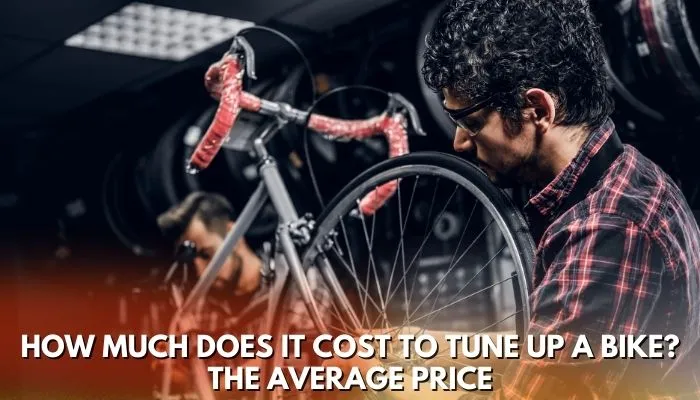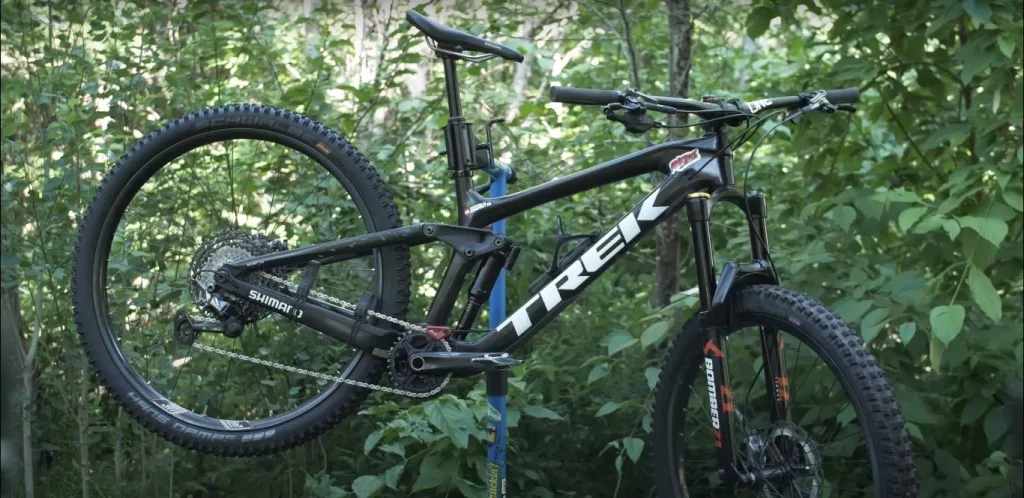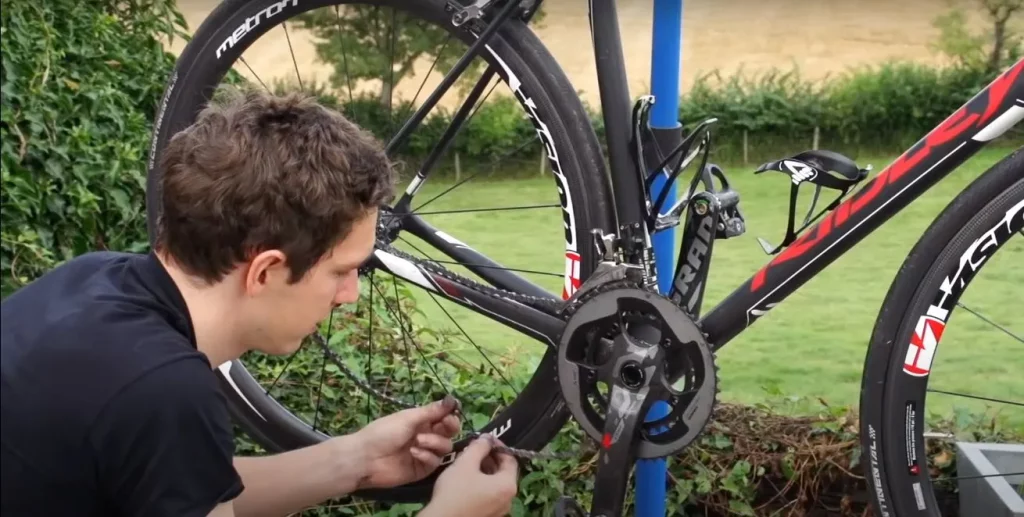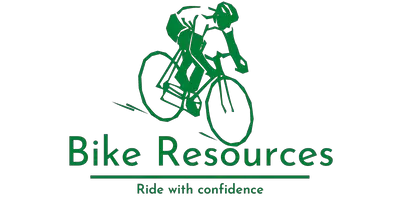How Much Does It Cost to Tune Up a Bike? – The Average Price

Everyone who rides their bike frequently or just occasionally understands just how vital it is to have their bike fixed up. By making sure that all of the bike’s parts are snugly attached, it maintains your bike functioning at its optimum. It denotes that the bottom bracket, headset, shifters, brakes, and other bike components are functional or currently performing well. Your bike has to have the tune-up performed on a regular basis as part of its upkeep.
How Much Does a Bike Tune Up Cost, Though?
An ordinary bike tune-up will price you between 60 and 150 dollars. Based on your bike’s service requirements, you can choose between a basic tune-up costing 60 dollars and a comprehensive tune-up costing between 100 and 150 dollars.
But what precisely takes place during a bike tune-up? And how much should you plan to spend on one? To help you with any concerns you might have, we put prepared this in-depth guide to bike maintenance.
Table of Contents
How Much Does a Bike Tune-Up Cost?
Keeping a bike serviced is something you’ve considered whether you simply bought an entirely new bike, bought a used bike, or are a habitual rider. Yet, how much does a bike tune up cost? Are you actually in need of one?
Basic bike maintenance costs between 60 and 80 dollars, while standard maintenance costs between 100 and 160 dollars. These services range from truing tires, washing, lubricating, and changing brakes to drivetrain and gear modifications. Costs for a total refurbishment range from 150 to 250 dollars or more. Removing, thoroughly cleaning, and lubricating every part are phases in maintenance.
What Is the Purpose of a Bike Tune-Up?

The performance of your bike relies on every one of its working components functioning well, just like the effectiveness of your vehicle. If problems aren’t recognized early, they may become severe, become more costly to resolve, or even jeopardize your well-being while riding.
Furthermore, a lot of casual riders might not be capable of recognizing promising signs of a fault with their riding. For example, it might be simple to identify a corroded chain, yet you might not consider checking for worn brake discs. A yearly spring tune-up also serves as a smart option if you’re a frequent biker who leaves your bike unused all winter because your bike’s parts might degrade when it’s not in operation.
What Exactly Does a Bike Tune-Up Include?
When you request a bike tune-up, you will receive assistance for headset and bottom bracket corrections, group set inspections and modifications, hub and true wheel adjustments, and a moderate frame clean.
- Headset
One of the most crucial parts of your bike is the headset. It is in charge of steering the bike in the right direction and functions as the vehicle’s brain. When driving, you can enjoy precise and fluid steering if your headset is in excellent working condition. Also, having an improperly tuned headset can lead to traffic crashes. If your headset is not working at its best, you are going to struggle to maneuver the road in an effective fashion.
You should frequently examine your bike headset for security purposes. It’s important to clean off the dust and grit that accumulates on your headset. By doing this, you can stop the dirt from breaking or severely damaging this specific area. Your ride may be impacted, and you may have to work harder to control your riding as a consequence of dirt and grit entering your headset.
Clean the headset thoroughly, especially paying attention to the upper and lower bearings. It enables smooth and hassle-free navigation while permitting the fort to function efficiently. In order to accomplish this, the maintenance worker would remove the stem as well as the handlebar while unbolting the fork from the bike frame. The grime, grease, and filth will then be removed by wiping. After that, the headset will go through another application of lubrication.
- Bottom bracket
Your bike’s bottom bracket is yet another critical component. This is the place where the bike frame and pedals come together to transmit force and power to the wheels. Your bike can engage properly with the assistance of a bottom bracket.
The majority of bike shops make sure the bottom bracket is in fine condition because it is a crucial component of the primary tune-up operation. It will not operate effectively if the bottom bracket is too snug or excessively loose. If this happens, the maintenance man could either strengthen it or change the bottom bracket as required.
- Derailleurs, front and back
If you ride a bike frequently and regularly on rocky, hilly roads, your front and back derailleurs may have become damaged or worn out. Shifting gears on a bike would be difficult if the derailleurs were not properly tuned. That will make it harder for you to ride your bike over tough terrain with steep inclines.
To ensure you have the best possible bike ride, it is crucial to set both derailleurs correctly. The derailleurs must always be maintained while the bike is being tuned up, so make sure you do that. By doing this, you can be confident that the chain won’t come loose or shift into a different gear when you change gears.
Your derailleurs will indeed be looked at to decide whether they must be repaired or replaced as a portion of the tune-up process. The component might need to be adjusted or replaced if it is severely compromised. This will result in a more efficient, silent, and convenient derailleur.
- Brake pads, levers, and cables should all be adjusted.
Your riding experience is also directly impacted by the brake pads, lever, and cables. It is crucial that these elements are appropriately adjusted to meet your requirements, implying that you can commute and ride well on a bike.
Check your bike’s cables, especially those closest to the rear brake, to help ensure they are not loose. Adjust the position and move it back to its right position if cables get caught. Also, all of the group bike sets, such as the lever, calipers, and many others, are snugly secured.
The brake pad must then be the next item on your inspection checklist because it has to contact the center of the braking area on the rim. To prevent extra noise or squeaking, make sure the front portion of the pad is in touch with the rim.
- Chain, chainring, and cassette inspections
The bike chain, cassette, and chainring are the essential parts of the bike that require maintenance. Given how quickly they can wear out, you should examine the chain frequently. If this takes place, a damaged chain may also have an influence on how well the cassette and chainring function.
Chain replacement is important, especially if you use your bike regularly. It should be performed at once every year at least. On the other side, the bike’s cassette and chainring need to be properly greased and tuned accordingly.
- True wheels and hubs
It’s also crucial to take good care of the hubs and wheels of your bike. Your true wheels and hubs should be kept in excellent working condition with basic maintenance. To guarantee that the bike wheels operate as planned, make sure they are properly fastened to the bike. Your weight should be maintained by the wheels, which should also keep up the equilibrium of your vehicle. You should check for holes, curbs, or uneven edges if it is not functioning properly.
When Ideally Should You Acquire One?

Talking about how much does a bike tune up costs, a tune-up is something that an enthusiastic biker who rides hundreds of miles per week will need more regularly than the normal weekend rider. At least once a year, you should have your bike tuned up. The frequency of your rides, the weather when you ride, and the way your bike is housed are all factors that influence this estimate.
Following the winter storage of their bike, riders will undergo a Springtime Tune-up. Riders that opt to withstand the cold, as well as more extreme conditions like dirt and rock, may realize that they need tune-ups multiple times a year. The good news is that, particularly if they regard themselves as frequent riders, the majority of riders perform their own upkeep and tune-ups. Saving money and learning so much about your bike, along with maintaining its condition simultaneously, are two wonderful advantages of this.
Which Tune-Up Do I Need?

- Fresh Bike:
A straightforward tune-up will be adequate if your bike is brand new. This is advantageous since you can know for sure that the components are in good condition. Making sure that everything is correctly tightened and aligned is what needs to be done in this situation.
- Frequently Ridden:
If you ride your bike commonly, it’s a good idea to undergo a regular or standard tune-up, either once or twice a year. Since you aren’t going to receive these tune-ups frequently, this is also referred to as an annual service.
It’s a smart option to book one before the winter sets in if you want to ride throughout that time. This will guarantee that your bike is prepared for the increasing pressures of the season. To be certain that your bike is prepared for the upcoming season, you could plan a backup one for the spring.
- Really Neglected:
A complete tune-up is recommended if you acquired a bike at a garage sale or had something resting in the garage. Any rust on your bike will be removed by a shop, and it will be brought back to its original condition.
It is possible to perform a basic tune-up more frequently. If you’re intrigued, a lot of what is mentioned in bike maintenance may be done by yourself. You may take care of small things, such as testing the brakes and adjusting the tire pressure by yourself.
- How Long Does bike Tuning Take?
A bike tune-up may be something you’re considering. You should have a realistic expectation of how much time your bike tune-up will take before you leave for your Retailer, especially if you expect it will only take a little while.
While the length of time ultimately depends on the number of bikes in the Maintenance Department that are in front of you, tune-ups are typically performed in a few hours. A simple tune-up should take between 30 and 60 minutes, whereas a comprehensive tune-up may take around 60 and 120 minutes.
FAQs:
Is a Bike Tune-Up Required?
In order to make sure your bike is dependable and safe, a tune-up or maintenance is required. Bikes experience wear and corrosion similar to all things mechanical. A crucial aspect of bike ownership is keeping your bike well-maintained, which will help it last better. Also, it will assist you in avoiding the scenario of being stuck in the middle of nowhere on a broken bike.
How Often Should A Bike Tune-Up Be Scheduled?
Most bikers are recommended to get their bikes tuned up once a year, while those that ride all year long in adverse weather may wish to organize a twice-yearly tune-up.
Why are bike maintenance costs so high?
Prices for tune-ups typically just include the cost of labor. Most of the time, conducting a tune-up includes replacing old or damaged components, and they can quickly mount up to be as pricey as or even more costly than the tune-up effort itself.
Conclusion:
Now you know how much does a bike tune-up cost. It’s your responsibility as a responsible biker to make sure your bike is in top condition by swinging by a bike repair shop. Also, it ensures your continuous safety on the road. Numerous bike retailers out there offer different packages and charges for a tune-up. Before taking advantage of the rate, assessing your bike’s requirements is vital.
